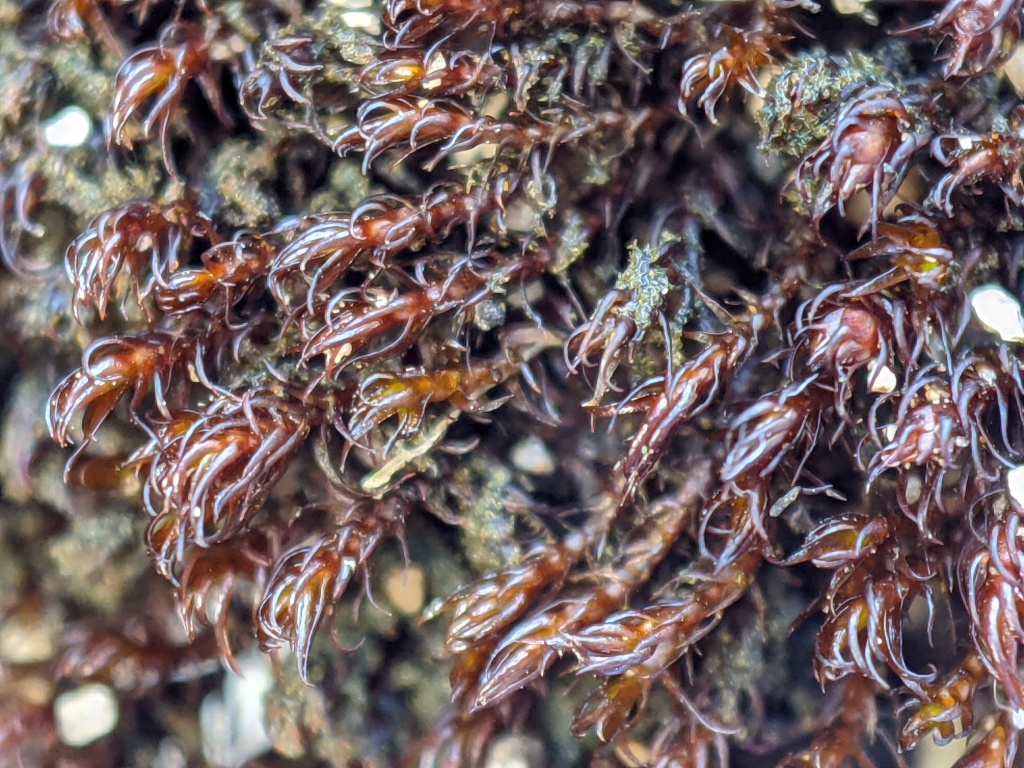Andreaea acutifolia
Hook.f. & WilsonAutoicous. Tufts and mats on rock. Stems 10–15 mm long. Leaves erect-spreading to wide-spreading and usually secund when moist, imbricate and appressed, or occasionally wide-spreading on lower parts of stem when dry, ovate-lanceolate, lanceolate to narrowly lanceolate, c. 1–1.5 mm long, 0.2–0.4 mm wide, concave near base and sheathing; apices acute or acuminate, often reflexed; costae absent; margins usually crenate or toothed near base, incurved; cells in apical half isodiametric to short-rhombic, smooth or papillose abaxially, unistratose; basal cells mostly rectangular to elongate, mostly 17–23 μm long, 8–11 μm wide near margins, occasionally some cells isodiametric, 27–35 μm long near centre. Perichaetial leaves convolute and sheathing. Turgid spores 32–50 (–60) μm diameter; shrivelled spores 20–38 μm diameter.
GGr, VAlp. Recorded in Victoria from the summit of Mount William in the Grampians in rock crevices. Also NSW and Tas. New Zealand, southern South America and Macquarie, Auckland, and Campbell Islands.
 Spinning
SpinningMurray, B.M. (2006). Andreaeaceae. Flora of Australia 51: 108–123.

